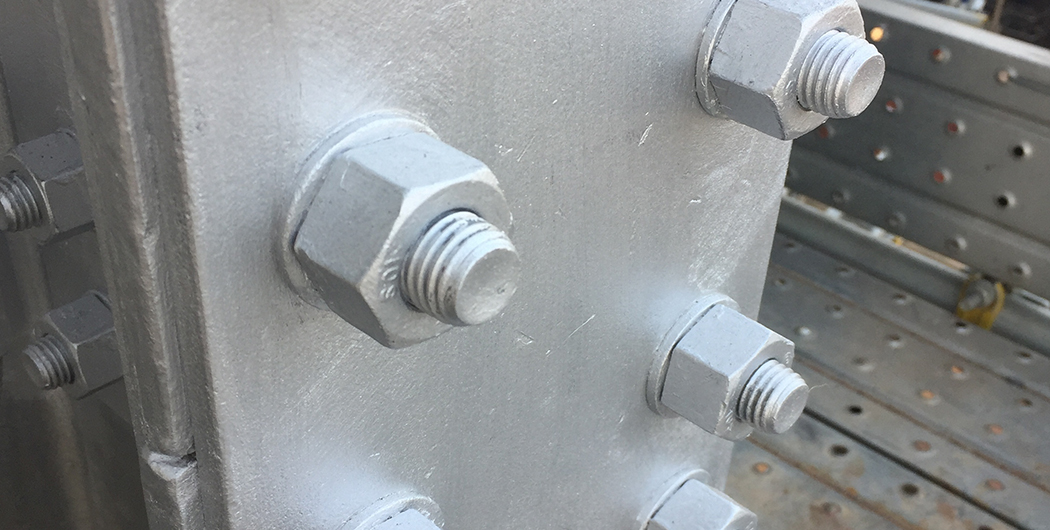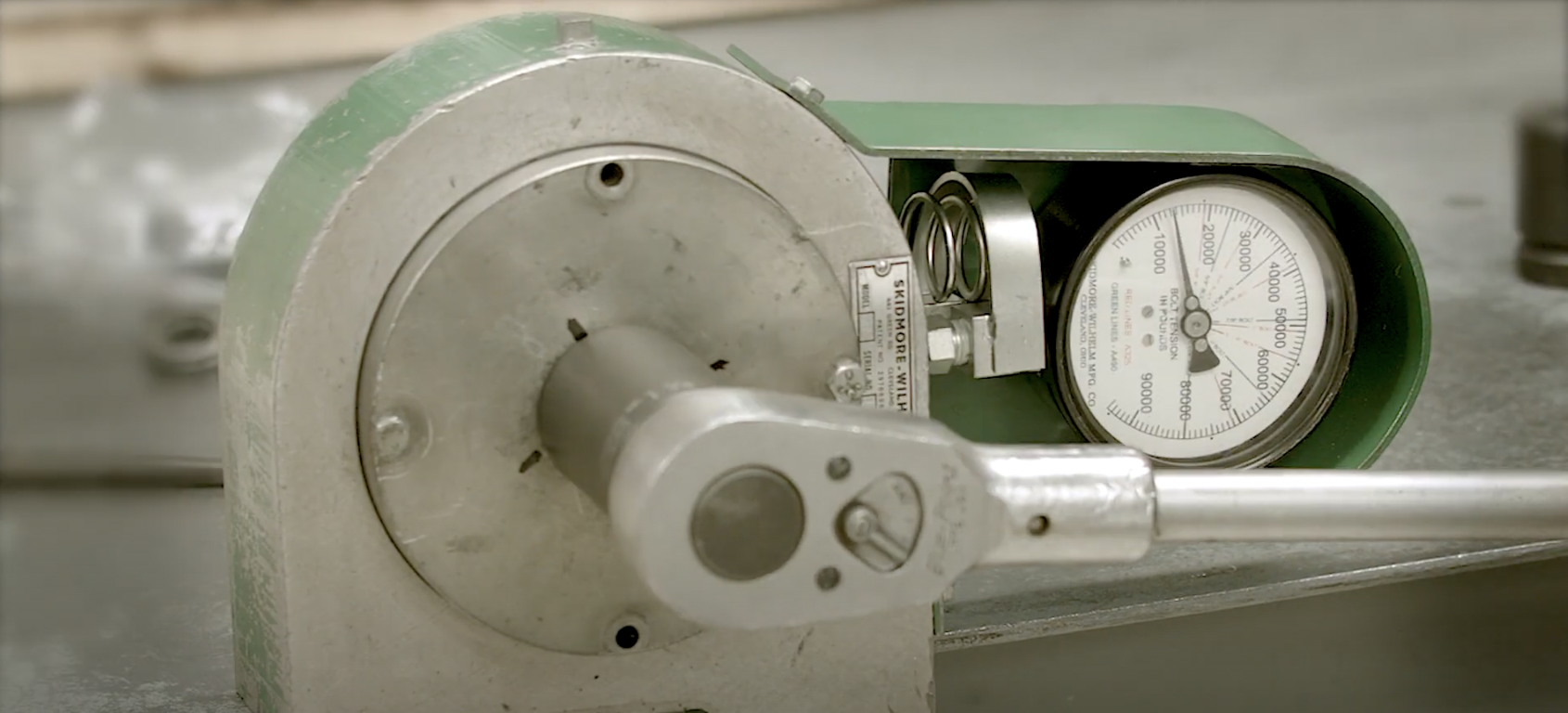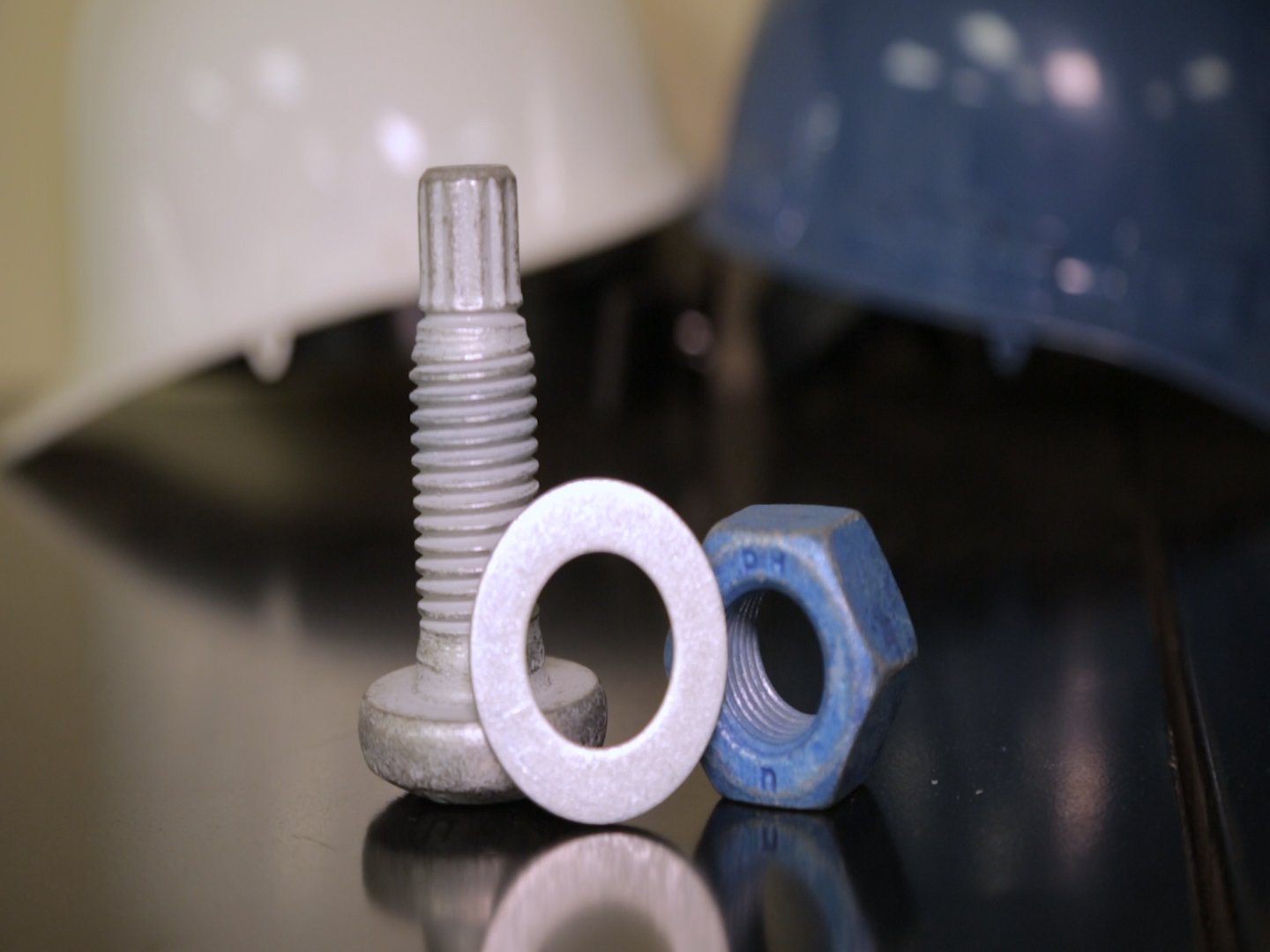Structural Bolt Stickout: Minimums and Maximums

Structural bolt stickout is just what it sounds like – it’s the amount of threads protruding beyond the nut after installation. While the RCSC does specify a minimum for bolt stickout, they do not specify a maximum. That being said, there are risks to consider with too much bolt stickout. Here, we’ll go over the requirements, risks, and best practices regarding structural bolt stickout.
Structural Bolt Stickout Minimum
The RCSC requires that the end of the bolt must, at minimum, be flush with the outer face of the nut. The nut may not be hanging off the end of the bolt after tightening is completed. When the outer face of the nut is flush with the end of the bolt, the bolt’s ductility is at its greatest. This is because the maximum amount of threads are exposed, allowing the bolt to stretch as much as possible.
Structural Bolt Stickout Maximum
While the RCSC does not specify a maximum for bolt stickout, there are risks to take into consideration. If the threads extend too far beyond the nut, there is a chance that the nut has reached the thread runout. This could cause quite a few different risks. Depending on your installation method, the following could occur:
- Calibrated Wrench or Twist-Off Methods: The bolt will not be properly pretensioned, due to the nut ceasing rotation, while the torque remains high. This causes the bolt to remain loose.
- Turn-of-Nut Method: The required turns cannot be applied.
- Direct Tension Indicator (DTI) Method: The gap requirements will not be met.
There is also a risk of thread stripping with bolt stickout. During pretensioning, the bolt will stretch, reducing the thread contact between the bolt and the nut.
General Guidelines for Structual Bolt Stickout
Acceptable bolt stickout is established by the bolt and nut combination. Below is a chart that details general guidelines for acceptable bolt stickout. Note that any protrusion beyond these guidelines may still be suitable.
| Bolt Size (Inches) | Permissable Bolt Stickout/Protrusion |
| 1/2" | 6 Threads |
| 5/8" | 6 Threads |
| 3/4" | 6 Threads |
| 1 1/8" | 6 Threads |
| 7/8" | 5 Threads |
| 1” | 5 Threads |
| 1 1/4" | 5 Threads |
| 1 3/8" | 5 Threads |
| 1 1/2" | 4 Threads |

The Power of Finding the Right Partner

Focus on What
Matters Most
Related Posts






